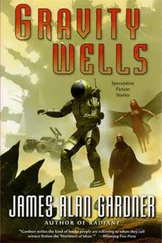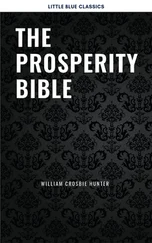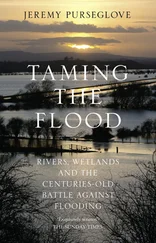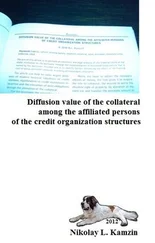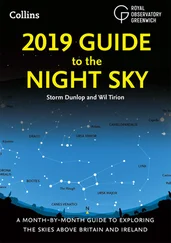5. Huddleston & Pullum, 2002; Huddleston & Pullum, 2005.
6. Huddleston & Pullum, 2002; Huddleston & Pullum, 2005.
7. Gordon & Hendrick, 1998.
8. Mostly from Lederer, 1987.
9. Garrod & Sanford, 1977; Gordon & Hendrick, 1998.
10. Hume, 1748/1999.
11. Grosz, Joshi, & Weinstein, 1995; Hobbs, 1979; Kehler, 2002; Wolf & Gibson, 2006. Hume’s connections between ideas, as he originally explained them, are not identical to those distinguished by Kehler, but his trichotomy is a useful way to organize the coherence relations.
12. Clark & Clark, 1968; G. A. Miller & Johnson-Laird, 1976.
13. Grosz, Joshi, & Weinstein, 1995; Hobbs, 1979; Kehler, 2002; Wolf & Gibson, 2006.
14. Kamalski, Sanders, & Lentz, 2008.
15. P. Tyre, “The writing revolution,” The Atlantic, Oct. 2012, http://www.theatlantic.com/magazine/archive/2012/10/the-writing-revolution/309090/.
16. Keegan, 1993, p. 3.
17. Clark & Chase, 1972; Gilbert, 1991; Horn, 2001; Huddleston & Pullum, 2002; Huddleston & Pullum, 2005; Miller & Johnson-Laird, 1976.
18. Gilbert, 1991; Goldstein, 2006; Spinoza, 1677/2000.
19. Gilbert, 1991; Wegner et al., 1987.
20. Clark & Chase, 1972; Gilbert, 1991; Miller & Johnson-Laird, 1976.
21. Huddleston & Pullum, 2002.
22. Liberman & Pullum, 2006; see also the many postings on “misnegation” in the blog Language Log , http://languagelog.ldc.upenn.edu/nll/.
23. Wason, 1965.
24. Huddleston & Pullum, 2002.
25. Huddleston & Pullum, 2002.
26. To be exact, he said, “We choose to go to the moon in this decade and do the other things, not because they are easy, but because they are hard …,” http://er.jsc.nasa.gov/seh/ricetalk.htm.
27. Keegan, 1993, pp. 3–4.
28. Keegan, 1993, p. 5.
29. Keegan, 1993, p. 12.
30. Williams, 1990.
31. Mueller, 2004, pp. 16–18.
CHAPTER 6: TELLING RIGHT FROM WRONG
1. Macdonald, 1962.
2. G. W. Bush, “Remarks by the President at the Radio-Television Correspondents Association 57th Annual Dinner,” Washington Hilton Hotel, March 29, 2001.
3. Skinner, 2012.
4. Hitchings, 2011; Merriam-Webster’s Dictionary of English Usage, 1994.
5. Lindgren, 1990.
6. American Heritage Dictionary , 2011; Copperud, 1980; Huddleston & Pullum, 2002; Huddleston & Pullum, 2005; Liberman & Pullum, 2006; Merriam-Webster’s Dictionary of English Usage , 1994; Soukhanov, 1999. Online dictionaries: The American Heritage Dictionary of the English Language (http://www.ahdictionary.com/); Dictionary.com (http://dictionary.reference.com); Merriam-Webster Unabridged (http://unabridged.merriam-webster.com/); Merriam-Webster Online (http://www.merriam-webster.com/); Oxford English Dictionary (http://www.oed.com); Oxford Dictionary Online (http://www.oxforddictionaries.com). Language Log, http://languagelog.ldc.upenn.edu/nll. Other sources consulted in this discussion include Bernstein, 1965; Fowler, 1965; Haussaman, 1993; Lunsford, 2006; Lunsford & Lunsford, 2008; Oxford English Dictionary, 1991; Siegal & Connolly, 1999; Williams, 1990.
7. M. Liberman, “Prescribing terribly,” Language Log, 2009, http://languagelog.ldc.upenn.edu/nll/?p=1360; M. Liberman, 2007, “Amid this vague uncertainty, who walks safe?” Language Log, http://itre.cis.upenn.edu/~myl /languagelog/archives/004231.html.
8. E. Bakovic, “Think this,” Language Log, 2006, http://itre.cis.upenn.edu/~myl /languagelog/archives/003144.html.
9. The errors are taken from Lunsford, 2006, and Lunsford & Lunsford, 2008.
10. Haussaman, 1993; Huddleston & Pullum, 2002.
11. Merriam-Webster’s Dictionary of English Usage, 1994, p. 218.
12. Nunnally, 1991.
13. This analysis is based on Huddleston & Pullum, 2002.
14. G. K. Pullum, “Menand’s acumen deserts him,” in Liberman & Pullum, 2006, and Language Log, 2003, http://itre.cis.upenn.edu/~myl/langua gelog/archives/000027.html.
15. B. Zimmer, “A misattribution no longer to be put up with,” Language Log, 2004, http://itre.cis.upenn.edu/~myl/languagelog/archives/001715.html.
16. M. Liberman, “Hot Dryden-on-Jonson action,” Language Log, 2007, http://itre.cis.upenn.edu/~myl/languagelog/archives/004454.html.
17. These and other examples of errors in student papers are adapted from Lunsford, 2006, and Lunsford & Lunsford, 2008. For an explanation of tense and its relationship to time, see Pinker, 2007, chap. 4.
18. Called out as an error by the New York Times ’ “ After Deadline” column, May 14, 2013.
19. Huddleston & Pullum, 2002.
20. Huddleston & Pullum, 2002, pp. 152–154.
21. Pinker, 2007, chap. 4.
22. G. K. Pullum, “Irrational terror over adverb placement at Harvard,” Language Log, 2008, http://languagelog.ldc.upenn.edu/nll/?p=100.
23. Huddleston & Pullum, 2002, pp. 1185–1187.
24. M. Liberman, “Heaping of catmummies considered harmful,” Language Log, 2008, http://languagelog.ldc.upenn.edu/nll/?p=514.
25. G. K. Pullum, “Obligatorily split infinitives in real life,” Language Log, 2005, http://itre.cis.upenn.edu/~myl/languagelog/archives/002180.html.
26. A. M. Zwicky, “Not to or to not,” Language Log, 2005, http://itre.cis.upenn.edu/~myl/languagelog/archives/002139.html.
27. A. M. Zwicky, “Obligatorily split infinitives,” Language Log, 2004, http://itre.cis.upenn.edu/~myl/languagelog/archives/000901.html.
28. From Winston Churchill.
29. This analysis is based on Huddleston & Pullum, 2002, especially pp. 999–1000.
30. Huddleston & Pullum, 2002, p. 87.
31. Huddleston & Pullum, 2002; Huddleston & Pullum, 2005.
32. Merriam-Webster’s Dictionary of English Usage, 1994, p. 343.
33. G. K. Pullum, “A rule which will live in infamy,” Chronicle of Higher Education, Dec. 7, 2012; M. Liberman, “A decline in which -hunting?” Language Log, 2013, http://languagelog.ldc.upenn.edu/nll/?p=5479#more-5479.
34. G. K. Pullum, “More timewasting garbage, another copy-editing moron,” Language Log, 2004, http://itre.cis.upenn.edu/~myl/languagelog/archives/000918.html; G. K. Pullum, “ Which vs that? I have numbers!” Language Log, 2004, http://itre.cis.upenn.edu/~myl/languagelog/archives/001464.html.
35. Merriam-Webster’s Dictionary of English Usage, 1994, p. 895.
36. Pinker, 1999/2011.
37. Flynn, 2007; see also Pinker, 2011, chap. 9.
38. M. Liberman, “ Whom humor,” Language Log, 2004, http://itre.cis.upenn.edu/~myl/languagelog/archives/000779.html.
39. Merriam-Webster’s Dictionary of English Usage, 1994, p. 958; G. K. Pullum, “One rule to ring them all,” Chronicle of Higher Education, Nov. 30, 2012, http://chronicle.com/blogs/linguafranca/2012/11/30/one-rule-to-ring -them-all/; Huddleston & Pullum, 2002.
40. According to the Google ngram viewer: http://ngrams.googlelabs.com.
41. A fifteenth-century curse discussed in my book The stuff of thought, chap. 7.
42. Quoted in Merriam-Webster’s Dictionary of English Usage, 1994, p. 959.
43. Merriam-Webster’s Dictionary of English Usage, 1994, pp. 689–690; Huddleston & Pullum, 2002, p. 506; American Heritage Dictionary, 2011, Usage Note for one.
44. For an analysis of the language of stuff and things, see Pinker, 2007, chap. 4.
45. J. Freeman, “One less thing to worry about,” Boston Globe, May 24, 2009.
46. Originally published as “Ships in the night,” New York Times, April 5, 1994.
Читать дальше


